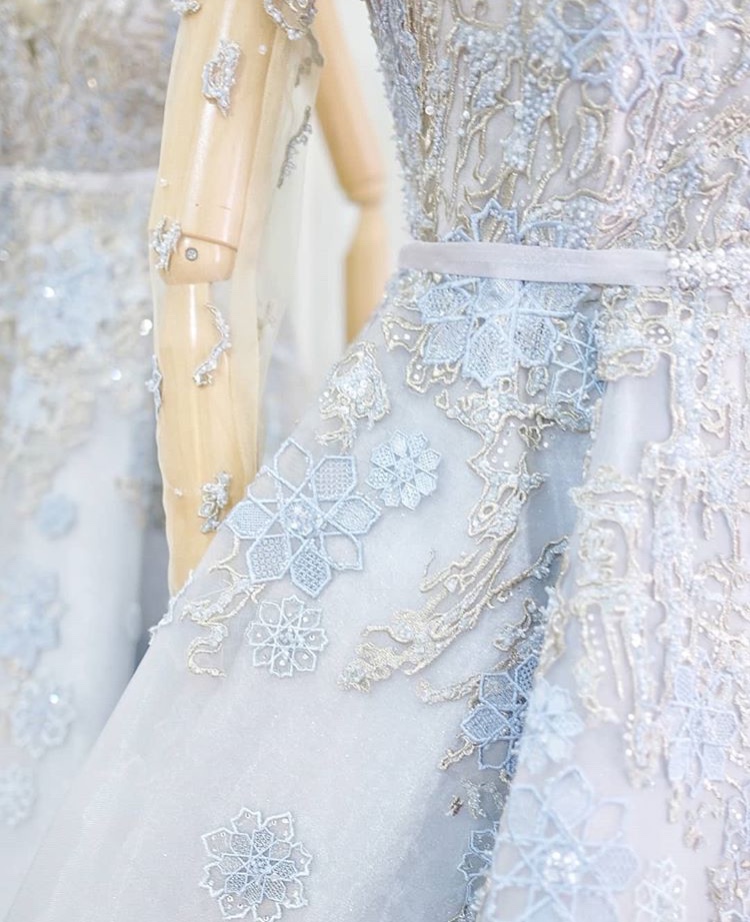Fashion industry in Medan: Surviving endless bargain and threat from global retailers
Jakarta has always been Indonesia’s fashion capital. It’s where magazines, retailers, designers, events and talents make and break their careers. But there are nine other big cities in the country. What is it like to run fashion business there?
Let’s start with the third largest city in Indonesia, Medan. In general, the fashion industry in Medan can be divided into three categories: made-to-measure, ready-to-wear and boutiques.
Back when Mango was the only fast fashion retailer in the city, ready-to-wear was limited to imported clothes sold at boutiques. There wasn’t much progress in the ready-to-wear category until H&M opened two stores in 2015, followed by Zara in 2016 and, most recently, Uniqlo.
Those retailers successfully boost spending among Medanese but at the same time, they pose a threat to local fashion business.
Image: Marcia The Label
Founder of ready-to-wear brand Marcia The Label, Queen Marcia said that brands have to be strategic with their pricing since those fast fashion retailers opened their doors. “Customers in Medan are extremely price-sensitive. They are willing to pay more for fast fashion garment because of the popular brand name.”
Apparently, where the brand comes from matters a lot to Medanese. “Everything made and designed outside Medan – Jakarta, in particular – is cooler for them,” said Queen.
In fact, designers we approached for this article echoed the same sentiment about Medanese’ shopping behaviour.
“70% of my customers comes from Jakarta,” said Phiralia Luanda from Petit Luanda, a children’s wear brand. “It’s either my friends who move to the capital city or Jakarta residents who found us through social media and friends.”
Petit Luanda started as a women’s wear brand under the name Studio Luanda. The decision to launch children’s wear was made after the founder saw no hope in women’s wear.
Image: Petit Luanda
“The women’s wear category has been flooded. Personally, I found children’s wear more enjoyable.” It is not a wrong decision after all, considering that getting married is the social norm in Indonesia. Parents are willing to spend money on their kids.
What’s even more interesting is that the majority of Medan-based fashion designers specialises in made-to-measure for bridal and gowns. Only a small percentage survives the ready-to-wear category.
Take, for example, Stella Shen. The made-to-measure designer started her fashion career in ready-to-wear with her friends. “Even though it’s ready-to-wear, the design leans towards party outfits. However, for some reason, Medanese treats it like a made-to-measure business. They came in to our studio for fitting and demanded alterations here and there. We are no longer running ready-to-wear brand. We are turning into customised boutique!”
The designer then closed her ready-to-wear brand and focused on made-to-measure instead. According to Stella, the ready-to-wear category has been conquered by brands from Jakarta and global retailers.
“It’s more prestigious to wear clothing from Jakarta for them,” said Stella.
Image: Stella Shen
The lack of appreciation towards Medan-based designers ultimately affects the value of garment. The motto of Medanese customers is to get as much as you can from designers and pay as low as possible. “The trick is always the same: I’ll give you exposure to my friends in exchange for discount.”
Designers who have made their names in fashion week, Naga Satya and Hartono Gan to name a few, are not immune to bargain. “There are people who visited every designer’s studio to compare prices,” said Stella.
It raised the following question: What causes the lack of appreciation from Medanese to Medan-based designers?
The number one culprit, according to our observation, is the lack of creative space and environment. Design requires process and deep understanding of culture and history. However, the city hardly sees any art gallery or design workshop, exhibition and activities. Adding to that, there is only one design institution in the city.
The growing number of creative practitioners in the city is seen as the an opportunity for customers to get designs and services like those in Jakarta and other countries with possibly lower price tag.
As Stella said, “I’ve had customers coming in and requested gowns like Yefta’s (Gunawan). If Yefta’s dress is around Rp100 million, they want us to create a similar one at Rp30 million. Expectation is higher than spending power.”
Lack of creative space also causes Medanese to develop the habit of consuming commercialised products from movie, clothing and music. Creative process is almost non-existent. Designers either follow what customers want or find another target market.
Ready-to-wear designers like Queen have to adjust their aesthetics to Medanese customers. “I altered contemporary modern style to more feminine, minimalistic approach with prints and colours.”
For made-to-measure, lace work and embroidery are mandatory. Only a handful of Medanese understands simplicity in shape and structure. Hence, basics don’t sell that well in the city. There has to be some extra details, such as cut-out, layer or ruffle, on top of the garment to justify the value they spend on a piece of garment.
As if customers are not enough of a challenge, designers have to overcome the obstacle of finding human resources.
After 7 years in the made-to-measure business, Stella employs 4 people in her team, leaving lacework, embroidery, social media, accounting and client meeting in her hands. Phiralia sews the entire children’s wear collection herself. “I want a steady growth. I don’t think I’m ready to expand and hire anyone yet.”
Most manufacturers in Medan specialise in uniform, while fashion manufacturers and experienced workers are concentrated in Java. It explains why ready-to-wear hardly survives in Medan.
Despite the issues above, Stella Shen posts 10% to 15% year-on-year growth. Marcia The Label books similar growth rate within the first year of operations.
In an effort to thrive, maintaining quality is Stella’s strategy. “I don’t take that many customers. Most of my customers are retainers.” She limits her order to 30 pieces a month.
On the other hand, Marcia The Label sees social media marketing and pop up market as its main sources of revenue. “80% of my customers is from Jakarta. The next step for me is to launch e-commerce.”
To survive the industry, fashion players in Medan have to join hands, support each other and educate customers along the way. If everyone complies with the standard, it will be harder for customers to dictate the designers.




